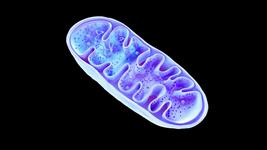CRISPR Fixes Multiple Dystrophin Duplications in DMD Patient Cells
Duchenne muscular dystrophy (DMD) is a rare, incurable muscle disease that occurs in approx. 1 in 3,500 to 5,000 live male births worldwide. The disease follows an X-linked pattern of inheritance, and exonic duplications in the dystrophin-encoding gene DMD are frequently found in DMD patients. Dystrophin is a cytoplasmic protein that plays a mechanical function in muscle.
Mutations in the DMD gene lead to a shortage of dystrophin, resulting in the hallmark signs of the disease, such as progressive muscle wasting, inflammation and loss of mobility before adulthood. Respiratory and cardiac dysfunction occur in advanced stages of the disease, and affected individuals usually die prematurely between the 2nd and 4th decade of life.
In a recent study, researchers in France used CRISPR-Cas9 gene editing to target intronic regions in the DMD gene. Their goal was to delete certain duplicated regions in patient immortalised myogenic (muscle progenitor) cells, specifically duplications of exon 2, exons 2–9, or exons 8–9, which are known hotspots for mutations in DMD patients.
They confirmed restoration of the DMD open reading frame and rescued dystrophin expression through western blotting and immunostaining of mytotubes following CRISPR-based deletion of the target duplications. RNA sequencing suggested rescue of genes in dystrophin-related pathways. Off-target analysis based on predicted close-match off-targets revealed no significant unintended gene editing at those loci.
While DMD remains incurable, four exon-skipping therapies have been approved for the treatment of patients carrying certain duplications: eteplirsen (exon 51, Sarepta Therapeutics), golodirsen (exon 53, Sarepta Therapeutics), viltolarsen (exon 53, NS Pharma) and casimersen (exon 45, Sarepta Therapeutics). Each of those treatments induce skipping of a single exon and may be used to treat patients with mutations in exons 45, 51 or 53, which account for about 30 % of all DMD cases. However, no treatment option exists for patients carrying duplications in exons 2-9, and the highlighted study presents a potential therapeutic avenue for such patients.
The findings were published yesterday in Scientific Reports (1).
References
- Lemoine J, Dubois A, Dorval A, et al. Correction of exon 2, exon 2-9 and exons 8-9 duplications in DMD patient myogenic cells by a single CRISPR/Cas9 system. Sci Rep. 2024 Sep 11;14(1):21238.
Tags
CLINICAL TRIALS
Sponsors:
Suzhou Maximum Bio-tech Co., Ltd.
Sponsors:
Zhejiang University







